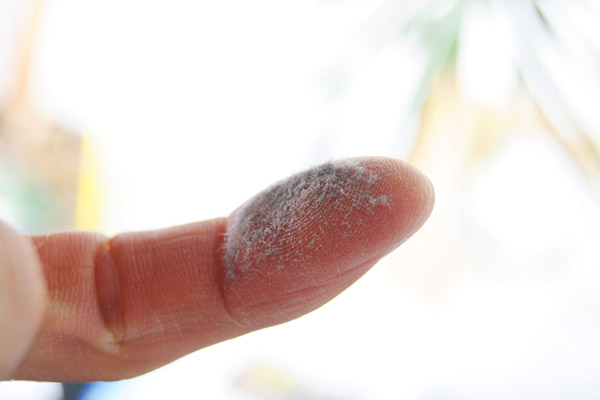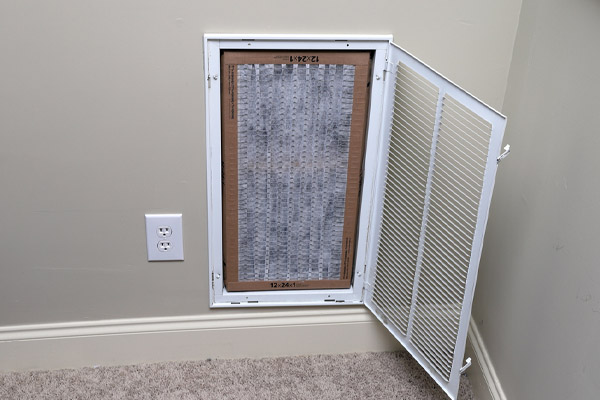Contents
Breathing in polluted air often leads to discomfort, prompting many to avoid outdoor activities during periods of dense smog. However, remaining indoors isn’t always a safer option, as the air inside can be equally, if not more, contaminated. Such conditions could be silently affecting the well-being of your family. This article will delve into the indicators of air quality problems within your household.
Recognizing the Need for Improved Air Quality in Your Home
Being vigilant is crucial in identifying persistent and escalating signs that suggest the need for action. Here are some clear indicators that your home’s air quality requires attention:
Persistent Sneezing

Your body naturally reacts to airborne pollutants by trying to expel them through sneezing. Occasional sneezing is normal, but if it becomes frequent, it signals that your indoor air is prompting this response and needs to be addressed.
Coughing
Exposure to a high concentration of particles in the air can lead to more severe issues. Inhaling these particles can cause them to become trapped in the lungs, leading to respiratory problems. Coughing is your body’s effort to eliminate these intruders. Continuous coughing is a clear sign that the air in your home needs purification.
Increased Illness

The spread of airborne pathogens is facilitated by dry air, accelerating the transmission of diseases within homes and communities. This scenario contributes to the higher incidence of colds, coughs, and flu-like symptoms during colder seasons. Managing humidity levels is a crucial step in improving indoor air quality.
Unexplained Fatigue
If you feel unusually tired within your house but feel more energetic once you step outside, your indoor environment might contain toxic fumes affecting your well-being. Issues like gas leaks or inadequate ventilation might be the culprits. Consult with an HVAC professional for an assessment.
Frequent Headaches
Regular exposure to chemicals, often found in household products like cleaning agents, can trigger intense headaches. The emissions from these products and other sources, such as pesticides, pet waste, and accumulated garbage, can produce odors strong enough to cause nausea. Furthermore, high indoor pollution levels can lead to nasal congestion and sinus headaches.
Aggravated Allergies
While allergies are often seasonal and linked to external factors, experiencing allergy symptoms out of season can indicate poor indoor air quality. Regular cleaning can help mitigate these symptoms. Additionally, the use of antihistamines might provide relief.
Excessive Dust

Rather than waiting for health problems to arise, take a proactive approach by examining your living spaces. An unusual accumulation of dust on interior surfaces, especially following renovations or other changes, indicates an increased presence of dust particles in the air. This excess dust can lead to respiratory problems.
The Vital Role of High Indoor Air Quality
Our well-being is significantly impacted by indoor environments where we spend most of our time. Poor indoor air quality due to prolonged exposure to pollutants poses health risks. Prioritizing IAQ is vital for a better quality of life, reducing chronic diseases, and respiratory problems. Using air quality monitors and prompt action is essential for healthier indoor spaces.
Effective Strategies To Improve Indoor Air Quality
If you recognize any of the aforementioned indicators, it’s crucial to act swiftly. Even modest measures can lead to substantial improvements in indoor air quality. Here are some key steps to boost IAQ:
Regular Replacement of HVAC Filters

Air filters in HVAC systems are pivotal in trapping pollutants, but over time, they lose effectiveness due to accumulated dirt. Replace these filters regularly to ensure optimal airflow and maintain high IAQ. This practice preserves air quality, extends the life of the equipment, enhances energy efficiency, and improves overall system performance. Opt for filters with high MERV (Minimum Efficiency Reporting Value) ratings to achieve superior air filtration.
Implement a Whole-House Air Filtration System
While HVAC filters are effective, they might not capture the finest particles. Consider installing a whole-house air filter for enhanced protection against a broader range of airborne irritants. Consulting with an HVAC professional can help you select a system best suited for your home’s specific needs.
Safeguard Against Heating System Hazards
If your home is equipped with a fireplace or wood-burning stove, be aware that they can emit harmful carcinogens. Gas-powered heating systems, like furnaces, are generally safer but still pose a risk of carbon monoxide leakage. Install carbon monoxide detectors and schedule regular maintenance for these heating systems to ensure they operate safely and contribute to cleaner indoor air quality.
Minimize Sources of Pollution
Identifying and addressing the root causes of air contaminants in your home is crucial. Simple changes can make a significant difference, such as prohibiting indoor smoking, opting for non-toxic cleaning products, and preferring solid wood furniture over composite options known to emit formaldehyde.
Manage Allergen Levels Effectively
Reducing their presence in the home is essential for those sensitive to allergens. You don’t need to part with your pets; instead, regular grooming and bathing can significantly minimize pet dander. Frequent vacuuming helps remove dander and dust, while washing bedding in hot water effectively eradicates dust mites. Cleaning mold from surfaces with soap can also prevent mold spores from circulating.
Enhance Air Quality with Indoor Plants
Plants are natural air purifiers. They absorb carbon dioxide and release oxygen, complementing the human respiratory process. Incorporating indoor plants improves air quality and adds a calming aesthetic to your space. Popular choices for enhancing indoor air quality include common ivy, peace lily, and dracaena, which are known for their air-purifying abilities and suitability for indoor environments.
Combat Indoor Dampness
Damp conditions inside a home can result in mold growth, the release of volatile organic compounds (VOCs), property damage, and respiratory issues. Address leaky roofs or cracked pipes to reduce moisture. Additionally, using dehumidifiers, opening windows, or installing exhaust fans can significantly enhance ventilation in moisture-prone areas like bathrooms and kitchens.
Conclusion
Protecting your family from the dangers of contaminated air is paramount. If you observe ongoing signs of poor air quality, take immediate steps to mitigate these issues. Begin with basic strategies to see improvements, and don’t hesitate to consult an HVAC contractor for more advanced solutions when needed. Investing in enhancing your home’s indoor air quality is not just about comfort; it’s about ensuring better health and well-being for your loved ones.
Contact Taylor Energy for Your HVAC Needs
Taylor Energy provides top-notch heating and cooling services throughout Northern Connecticut and is known for our highly qualified technicians who deliver exceptional HVAC maintenance, repairs, installations, and replacements. Our team, with extensive knowledge and experience, ensures your HVAC system is serviced efficiently and effectively.
We offer the most competitive rates for HVAC services in the area. Taylor Energy’s maintenance solutions are designed to enhance your comfort, boost energy efficiency, and reduce heating and cooling expenses in your home. Should you require an HVAC repair or a new system, our experts will guide you to the best options that align with your budget. We stand behind our work with a comprehensive satisfaction guarantee. To arrange a service appointment and receive a free in-home estimate, reach out to Taylor Energy today.
You can click here to contact us now or call us at (860) 623-3308 to find out more! Click the link to view our service area.

Related Articles:
